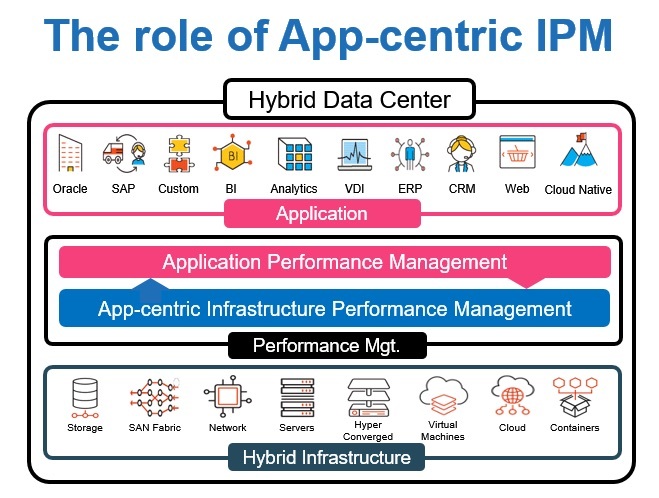
 EB: What is App-centric IPM?
EB: What is App-centric IPM?
PV: App-centric Infrastructure Performance Management (App-centric IPM), is a holistic approach to optimising the performance, availability and cost of IT infrastructure in the context of the applications it is supporting. The foundation of App-centric IPM is real-time monitoring, providing a 360-degree view of IT infrastructure performance across the increasingly hybrid data centre. Unlike other monitoring methods, app-centric IPM captures data from the virtual machine right through to data storage, recording and correlating thousands of metrics in real-time. App-centric IPM is critical for organisations today because if the infrastructure is not performing well, it affects applications, systems, employees and ultimately the service provided to paying customers.
The highly accurate and comprehensive capabilities of a truly app-centric IPM platform will empower IT staff to deliver on the complex requirements of their application infrastructure. With this approach and solution, IT managers can proactively manage performance and finally put an end to reactive troubleshooting and rampant over-provisioning.
EB: How does App-centric IPM work?
PV: An app-centric IPM solution utilises software and hardware probes to non-intrusively collect and provide vendor-independent insights into the performance, availability and utilisation of the end-to-end infrastructure across virtual, physical and cloud environments.
App-centric IPM uses high-fidelity, real-time infrastructure instrumentation and wire data collection to intelligently collect, correlate and analyse an unmatched breadth and depth of data. Machine learning-based predictive analytics help to transform data into actionable outcomes, which enable applications and infrastructure teams to collaboratively promote and guarantee performance-based SLAs, increasing the value of the infrastructure.

In addition, the workload I/O profiling capability equips engineers and architects with the insight needed to optimise the cost and assure the performance of networked storage infrastructure, eliminating the risk and guesswork associated with changes, migrations or consolidations.
EB: What are the business benefits of App-centric APM?
PV: The benefits of app-centric IPM include the ability to guarantee performance, maximise availability and optimise infrastructure costs. The solution enables IT managers to be proactive, finding problems before they affect users and predicting performance issues such as resource contention, before problems arise. It empowers application owners to have a meaningful discussion about the key infrastructure metrics that affect application performance and availability. It allows a shared view and common understanding of how applications relate to and are supported by the infrastructure.
EB: What are the main challenges in deploying App-centric APM?
PV: The main challenges involve people. The key challenge organisations face is gaining consensus from everyone involved in running the infrastructure as to an accurate picture of the entire environment and how it relates to application performance. IT managers need to step out of their silo-specific views and look at their area of responsibility in relation to the overall infrastructure and understand how it affects other applications.
EB: What would be your top tips for a business looking to deploy App-centric IPM?
PV: Make sure it is a vendor-independent solution that works across all infrastructure components (virtual machines, servers, networks, storage). Make sure it is a true real-time (to the millisecond) solution – no polling of averages. Make sure it will cover the on-premise private cloud infrastructure with the capability to support business-critical applications when and if they move to the public cloud.
Top tips – App-centric IPM products must:
- Continuously capture, correlate and analyse system-wide heterogeneous infrastructure performance as measured by response time, plus utilisation and health metrics, in real-time.
- Provide a comprehensive view of system-wide infrastructure performance, from client, to server, to network, to storage in the context of the applications being serviced.
- Leverage an analytics framework for contextual understanding, correlation and discovery. Gathering and presenting metrics in a dashboard is insufficient. Predictive analytics, which incorporate machine learning, are essential to preventing performance problems and outages.
- Offer vendor-independent definitive insights that are accurate and actionable by the operations and engineering teams.
- Scale to handle a very large number of physical devices and infrastructure services along with the associated metrics without risk of hitting a limit.

 EB: What is App-centric IPM?
EB: What is App-centric IPM?




